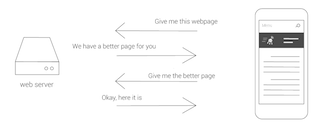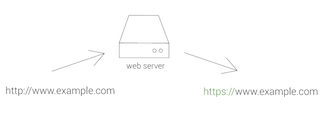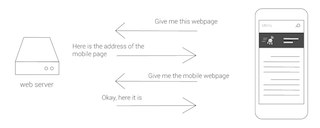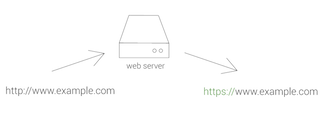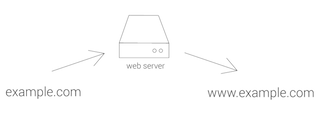Pipeline Marketing: A Powerful Tool For Realizing Funnel Potential
Posted By Tim Clarke

Pipeline marketing is a term that many in the marketing industry, even those heavily engaged in digital marketing, are not entirely familiar with.
It may go by other names; math marketing or revenue marketing, for instance, but the idea is the same: using data strategically to critically evaluate the effectiveness of online marketing efforts.
ClosedOpp was a very early adopter of this concept. A small paid search agency founded in 2007 that is breaking new ground in PPC marketing, ClosedOpp has been able to improve lead attribution by integrating all of its clients’ AdWords and Bing data with their CRM records.
The process of pipeline marketing is unique and innovative. ClosedOpp ties paid search data into clients’ Salesforce opportunity and lead records. This provides the ability to track leads from the point they were created, to closure. It also allows marketers to analyze the paths that resulted in the new business wins, to compare paths and to identify best practices to leverage in the future.
Pipeline marketing is a powerful tool to help businesses better understand their customers, how to segment customers into more high-performing groups, and how to identify the sales approaches that achieve the best results. Customer better, how to segment, and how to attribute successful sales approaches.
Rich Norwood, co-founder of ClosedOpp, describes how they developed this approach: “We realized early in 2012 that many digital marketers didn’t trust AdWords conversion data and were looking for a new way to track SEM performance.
We ran countless regressions identifying whether or not there was a correlation between AdWords conversions and Salesforce leads, AdWords conversions and Salesforce opportunities, and AdWords conversions and Salesforce wins. Once we determined there was a low R-squared correlation, we began looking for a better solution for our clients…”
The Power of Pipeline Marketing
The result was the new approach of “pipeline marketing,” which lets businesses focus less on lead gen and more on what they really care about, results. From Bizible’s website: “If your intention is to grow your business, shouldn’t you want to focus on generating customers and revenue, not leads?”
Lead gen, developing new contacts in hopes of increasing sales, has been an important marketing metric for decades. However, as Bizible states, “even as marketing has shifted to digital and analytics systems have been able to capture more complex data and insights, far too many companies are using legacy ways to measure their performance.”
Norwood asks the $64,000 question: “Do the clients care about leads or do they care about opportunities?” It boils down to this: do they want contacts, or do they want customers? Norwood says, “This may throw some people off. However, we’ve… proven that all leads are not created equally, some keywords drive larger opportunities, some keywords convert to opportunity at a much higher conversion rate. This is what Pipeline Marketing and Account-Based Marketing is all about.”
How It Works
The beauty of it all is that pipeline marketing allows marketers to be able to evaluate, in real time, exactly what keywords are driving visitors to their site, where they’re entering and what actions they’re taking. It’s a powerful analysis tool that requires careful consideration up front to realize the full promise of the technique.
Here’s how it works:
- Define campaign goals. The first step to embracing this new approach is for businesses to define their campaign goals in detail. And one of the most important goals is, as Norwood explains, to “focus on their sweet spot first. Start with the keywords that are must-targets.”
- Determine, specifically, the type of leads you’re looking for and where in the sales funnel you hope to initially engage with these leads. For instance, Norwood asks, “Do [you] want to buy top of funnel leads, leads looking for resources, checklists, and guides? Those leads tend to convert a lot… but [few] convert into opportunity. This can be a great strategy if the company is at scale and already has a successful nurture program. On the other hand, clients may decide it’s best to start with bottom of funnel leads that want a quote and pricing information and to talk with someone from sales.” It’s clear to see that engaging at the bottom of the funnel can yield better, and less expensive to convert, opportunities.
- Focus on Cost Per Opportunity. Norwood explains: “Because the opportunity has a high correlation with wins, and pipeline is defined as the total amount for all open opportunities, it makes sense that Cost per Opportunity should be the focus.” Simply put, you’re looking for the best outcome. This should be the main metric you focus on, according to Norwood. What keywords drive the highest ROI? “We need to create pipeline and wins. Period,” he says.
- Monitor and measure. Because they are tied in so closely with their clients’ CRM records, ClosedOpp is able to be extremely responsive and nimble, receiving feedback daily about what is and isn’t successful. Shorter timeframes allow quicker course corrections, as well as more rapid expansion of a campaign to leverage big wins.
- Adjust, and reap the rewards. Based on the feedback received, marketers are able to adjust their budgets based on real data related to ads, channels, keywords and audiences.
Access to Salesforce records powers the potential of pipeline marketing and provides a unique approach to business development. Norwood says, “[W]e actually measure leads, opportunities, wins, and Average Revenue per Unit (ARPU) daily, in real time. Our access to Salesforce allows us to monitor paid search so that we can see problems before they affect revenue.
We literally have our fingers on the pulse of the company. We often share data with our clients that cause them to pivot their whole strategy or completely redesign their landing pages.”
Pipeline marketing provides the ability to take a very focused, outcome-based approach to campaign analysis Norwood explains: “Our system creates an instant feedback loop between sales and marketing with the simple action of converting a lead to an opportunity and adding the amount to the opportunity.
We see this instantly and take action [often] days before the director of marketing suggests that we do so, because we’re looking at the data in real time and the director of marketing is in meetings.”
The Takeaway
What pipeline marketing boils down to is using your Salesforce records to figure out where your opportunities are coming from. Norwood clarifies: “Traditional PPC companies care about AdWords conversions. We don’t. We care about getting to know what campaigns, ad groups, keywords, landing pages, ads, countries, cities and devices result in opportunities and revenue.”
Businesses that are able to tie marketing attribution to their CRM can get to market more quickly, spend money more wisely, and out-market their competitors. Pipeline marketing offers a unique competitive advantage, and gives business owners and managers an enormous amount of insight.
When you know where your best customers come from, it makes sense to invest more paid search dollars toward finding them. Pipeline marketing leads the way.
Contributor
Charles R Juarez Jr
Alan Zibluk – Markethive Founding Member

